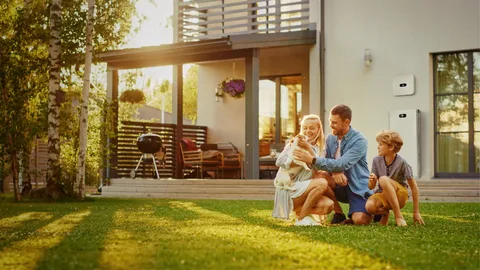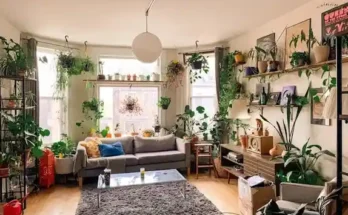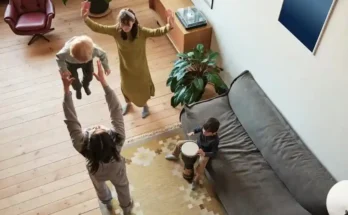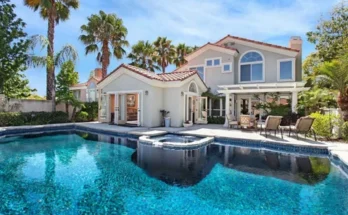There is a certain kind of magic in the word home. It’s more than a roof and four walls. It’s the scent of morning coffee, the echo of laughter in hallways, the quiet space where dreams are born, and the haven where hearts return. Homes are not merely physical spaces; they are living, breathing memories made from moments. As we stroll through the corridors of time, we find that homes—whether carved from stone, wood, or steel—have always told a deeper story.
To speak of a home is to speak of belonging. Unlike a house, which can be bought or sold, a home is built emotionally—brick by brick, memory by memory. It’s where first steps are taken and goodbyes are whispered. It’s the canvas for life’s masterpieces, no matter how big or small. Each creak of the floorboard and each sunbeam through the window has a tale to tell.
The Charm of Traditional Homes:
Traditional homes are more than architectural blueprints—they are echoes of culture, heritage, and enduring values.
-
Architectural Stories Etched in Time
From Victorian cottages in England to adobe homes in the American Southwest, older homes carry with them the fingerprints of their makers. The materials used—natural stone, wood, clay—were sourced from the earth, often shaped by hand and spirit. These homes were not mass-produced; they were personal. There’s an elegance in their imperfection, a story in every arch, window frame, and tiled roof.
In many traditional homes, design was deeply tied to lifestyle. Fireplaces were the center of warmth and gathering. Kitchens weren’t open concepts but intimate enclaves where secrets simmered in pots. Rooms were often separated by purpose, and privacy was woven into the architecture.
-
Sentiment in Structure
Perhaps what stands out most about traditional homes is the emotion they carry. Walls stained with generations of joy and sorrow have a unique kind of gravity. Walking through an old home can feel like stepping into a novel—each room a different chapter. There’s weight and warmth in heritage, something that modern minimalism can sometimes lack.
The Rise of Modern Homes:
Where traditional homes tell stories of the past, modern homes whisper promises of the future. The rise of sleek lines, open concepts, and smart technology marks a new era in domestic life.
-
The Language of Light and Space
Modern homes are typically designed to let in light, invite movement, and dissolve the boundaries between inside and out. Open-plan living rooms flow into expansive kitchens, and floor-to-ceiling windows bring the sky indoors. It’s not just about aesthetics—it’s about lifestyle. The pace of life has changed, and modern homes reflect that. They accommodate flexibility, convenience, and the pursuit of peace in a chaotic world.
Minimalism in modern design is not just about owning less. It’s about letting space breathe. Neutral tones, uncluttered surfaces, and multi-functional furniture create a serene environment where the mind can rest.
-
The Digital Home Revolution
In the 21st century, homes have become smarter—literally. Thermostats adjust to your comfort without a touch. Lights turn off when you leave a room. Your refrigerator might even suggest a recipe based on what’s inside. The Internet of Things (IoT) has woven itself into the fabric of home life, making living more intuitive and efficient.
Safety and energy efficiency have also taken center stage. From solar panels to motion-sensor security systems, modern homes are built with the environment and personal wellbeing in mind. They are responsive, adaptive, and constantly evolving.
Bridging Old Souls with New Spirits:
What happens when tradition meets innovation? Some of the most breathtaking homes today are not purely old or new—they are beautifully blended.
-
The Best of Both Worlds
Many homeowners now seek to restore the charm of older homes while incorporating the conveniences of modern living. Think exposed brick walls paired with smart lighting. Imagine a centuries-old barn converted into a modern loft, where history and high-tech coexist.
This merging is not just aesthetic. It reflects a broader human truth: we crave roots as much as wings. We want to feel connected to something older than ourselves, while still keeping pace with the times.
Renovating historic homes has become a movement, not just a market. It’s a way of honoring the past while giving it a new voice. And for many, these homes offer the best of both worlds—a sense of soul with the sophistication of the future.
Homes Around the World:
Homes are mirrors of culture. A Japanese ryokan and a Scandinavian log cabin are worlds apart in design, yet both are profound expressions of local values and environments.
The way homes are built around the world often reflects how people live. In colder climates, homes are compact, insulated, and centered around warmth. In tropical regions, homes breathe—with high ceilings, open courtyards, and natural ventilation.
From the colorful colonial homes of Havana to the cave dwellings of Cappadocia, each culture designs homes not just for shelter, but for meaning. Architecture becomes philosophy. Layout becomes lifestyle.
The Evolving Concept of Home:
In recent years, even the idea of what a home is has been evolving. The rise of remote work, the housing crisis in urban areas, and the global shift in lifestyle values have reshaped the narrative.
Some have traded square footage for freedom, embracing tiny homes and van life. These minimalist, mobile homes symbolize a shift in priorities—from ownership to experience, from accumulation to intention. They ask the question: how much space do we really need to feel at home?
With the rise of the digital age, our sense of home has started extending into virtual spaces. People now build digital sanctuaries—curated playlists, video calls with loved ones, even digital wallpapers that feel familiar.
At the same time, there’s a growing awareness that a home is also emotional. It can be a person. A pet. A smell. A song. In an increasingly mobile world, we’re learning that home may be less about a place and more about a feeling.
Conclusion:
Whether carved from cobblestone or cast in concrete, homes have always been the setting for our most intimate stories. They evolve with us, reflecting our fears, dreams, and changing values. As we look to the future, one truth remains timeless: home is where we are most ourselves.
In the heartbeat of a home—old or new, grand or humble—is the rhythm of life itself.




